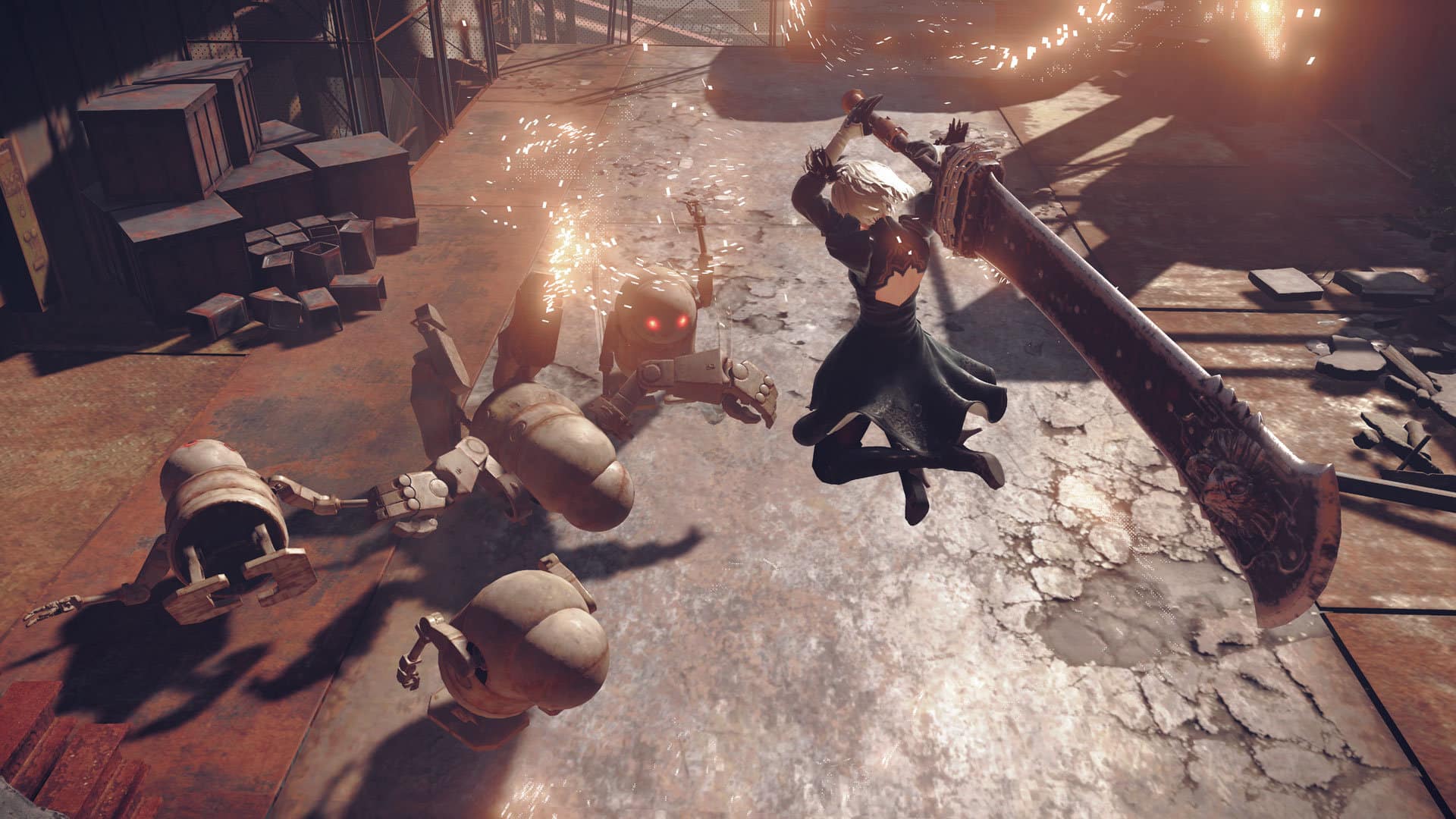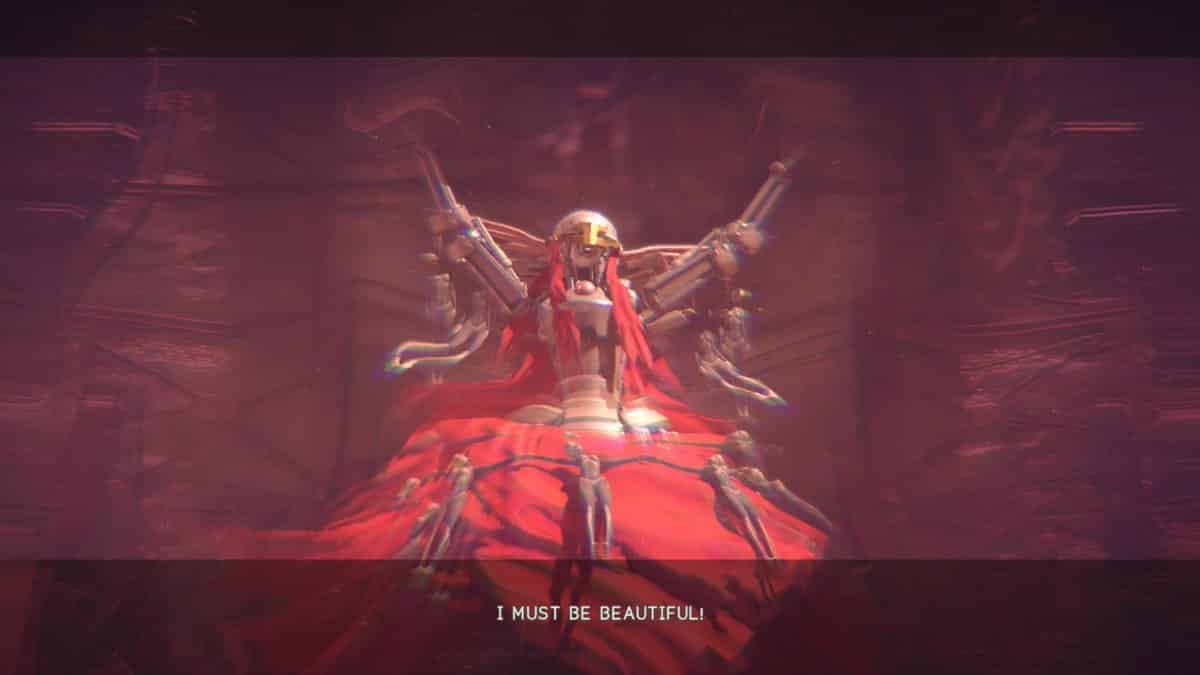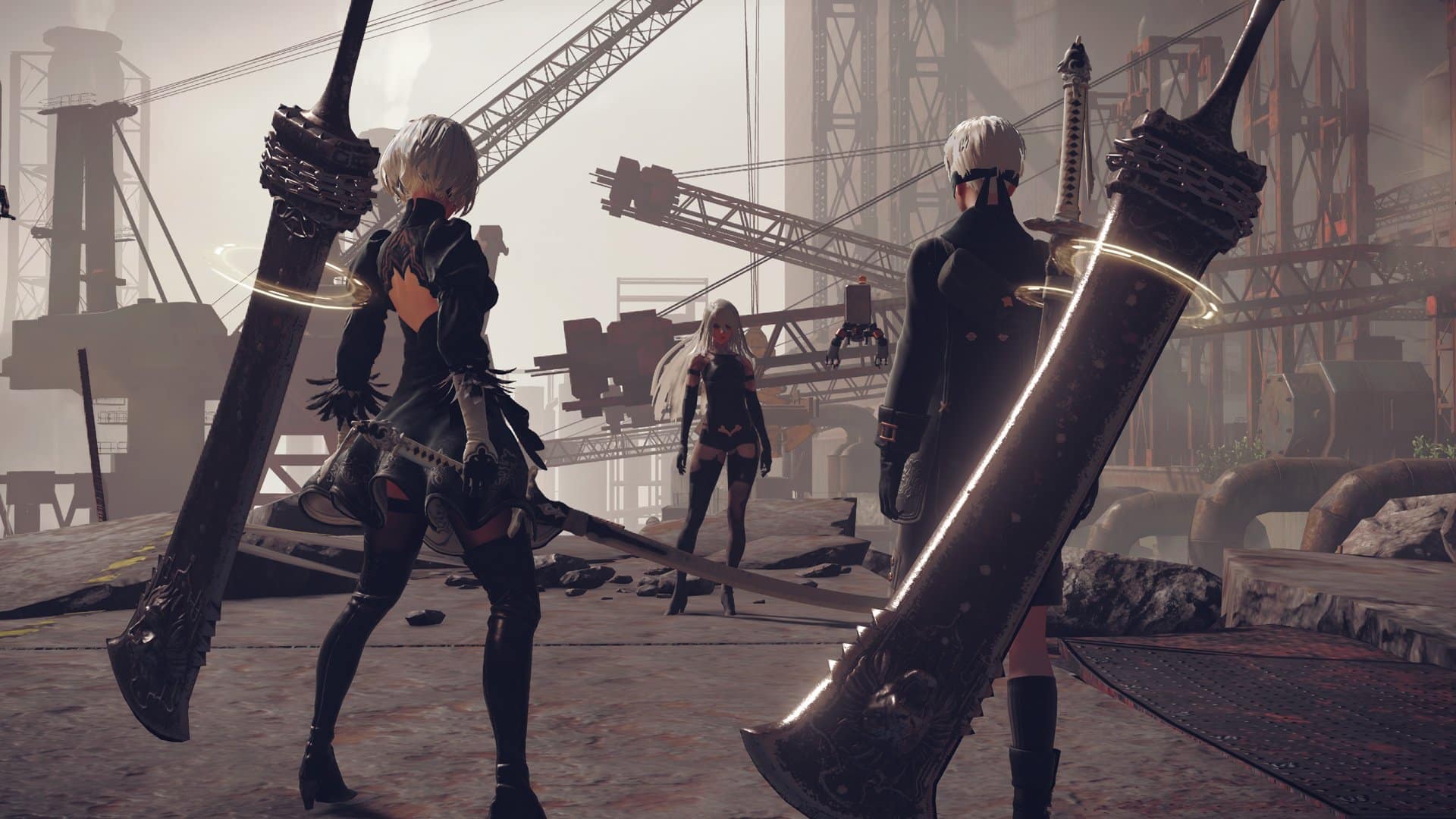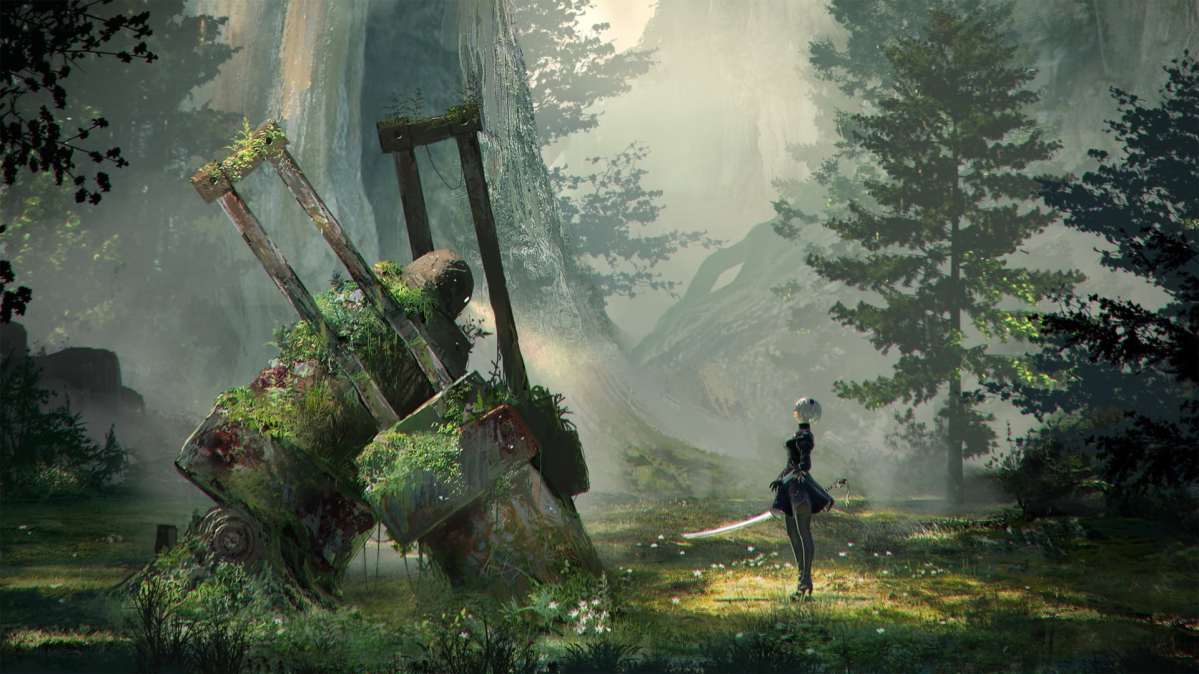Big, boisterous cannons. Pivoting mechanical joints. Sockets that can pop in and out advanced weaponry, oversized guns, and titanium katanas. These are the blood and guts of NieR: Automata’s mechanical lifeforms. When pictured as individual pieces, as strewn together parts, they create a menacing image: a machine designed for combat. He is deconstructable, modular. He can never really die, because his organs become the heart and lungs of the next killing machine.
The magic of NieR, however, is that these figures aren’t killing machines at all. Sure, the story seems like typical good versus evil and war between humanistic androids and alien machines, but the game swiftly subverts all expectations. The secret to its execution lies in the character design.
For the unacquainted, a brief summary―NieR is a game about machines. They are split up into two defined categories: the androids and the machine lifeforms. The androids were created by the human race to fight the aliens; the machine lifeforms were created by the aliens to fight the human race. The two mecha races fight a proxy war on their creators’ behalves, duking it out on a blighted Earth.
The alien-bred machine lifeforms are sturdy, simple structures with few joints and thin, mechanical limbs. Director Yoko Taro’s demands informed this minimalist design; he insisted that the machines’ bodies should not bend on more than two axes.
This single design trait brings a cohesiveness to the machine lifeforms. They feel expendable, un-evolved. It makes them appear like a sub-species of mecha, completely foreign and barbaric to the human-like androids. With their smooth curves and attractive silhouettes, the androids see themselves as the natural disciples of humanity, and the machine lifeforms as the ugly foil to their perfect form.

NieR’s character design plays on the natural biases of the player here and reinforces them through the beliefs of the androids. Like NieR: Automata’s predecessor, NieR Replicant, every new ending will reveal humanity in the monsters — and make monsters out of humanity.
Hisayoshi Kijima, NieR: Automata’s mecha designer, designed each variation of machine to specifically convey this dual perspective. How do you design characters that must simultaneously be able to be seen as good and evil? As the game progresses, the player slowly gains new ways to see each machine, to grapple with its appearance and capabilities. NieR constantly challenges the player to see further into each character, to go beyond the game’s initial premise. It asks: What if the machines used their ragged parts to create a baby stroller, not a submachine gun? What if their violence was simply an option, not an inborn requirement?
The player’s first exposure to this idea occurs when she comes upon an amusement park populated by non-violent machine lifeforms. The protagonist is extremely skeptical of their nonviolence and is asked many times by her companion to get rid of them, just in case they return to their barbaric nature. The machine lifeforms are still equipped with machine guns, but those machine guns are furiously shooting confetti, not bullets. You see your enemies walk around in their usual, uniform stupor, but instead of blankly looking for an android unit to kill, they are falling in step to a dance recital.
One of the game’s most striking bosses is Simone, a mechanical caricature of Simone de Beauvoir, an existentialist philosopher. She is the cherry on top of this amusement park level, equal parts horrifying and pitiful, and a notable deviation physically from the usual machine lifeform. She has a feminine face made of an iron helmet, a perfectly symmetrical crown adorned with the hanging bodies of two androids. She wears a voluminous red dress and bellows in opera as she slashes at the player. She is wholly an individual, albeit crying and vengeful. In a race without gender, she is proudly feminine, crying out in mourning as a spurned lover.

This design shows us what can be done with shapes on two axes and simple, modular beings. It has used weapon parts to make shoulder pads, metal plates to craft a Victorian gown. In all ways, Simone is attempting to reject her prescription as a war bot. Only when pushed to the limit must she expose the most robotic parts of herself. She keeps her spider-like legs hidden under her plated dress until she is fully vulnerable. She could much more easily defeat the androids by using her full arsenal of limbs, but she refuses to. To Simone, it is beauty over function.
Simone is not the only machine whose design subverts expectations in NieR: Automata. The androids too feature deviant design choices. Examining the design of 2B, our android protagonist, the eye is quickly drawn to her most distinguishing trait ― her black blindfold. This is an accessory she shares with all of her fellow ground units, the grunts of the android resistance. With her compatriots, she shares blindness, an inability to see the greater picture. Black and white vision, good versus evil. This tunnel vision carries over to the eyes of the player, who is shackled by 2B’s limited perspective of the war.
These small but philosophically loaded visual details are a critical part of every android design, spanning their social hierarchy. Above the land grunts are the operators. The operators send and moderate information distributed to the ground units. Simply put, they control the narrative. Yet instead of a blindfold, the operators wear face veils. They can see the bigger picture, but they are physically barred from revealing it. And at the top of this pyramid is the commander, who wears neither blindfold nor veil, all-seeing and all-knowing.

Blinds and veils aside, the most obvious bit of visual design trickery involves the androids’ figure. After a few playthroughs, it becomes obvious that the androids’ beauty is purely superficial. We begin to question what exactly makes them any different than their simplistic counterparts. A tight waistline? A larger vocabulary? Neither supposed advantage makes them more moral.
The ultimate message of NieR: Automata’s character design is that our own preconceived notions of beauty, intellect, and morality get in the way of our sight. When we decide that those traits have a face, a look, a style, we decide which lifeforms deserve empathy, which lifeforms are prone to violence, and which simply use it as a means to an end.
When the game forces us to cast aside these ideas, we finally achieve a full view of NieR: Automata’s cast. The player gradually gains an understanding that seemingly subservient machine lifeforms are actually capable of identity and self-determinism. Reexamining NieR: Automata’s first main boss, Engels, you can see that this terrifying monster of machinery is actually just one large construction site.
As Kijima put it, “he uses cranes to lift up his own arms — he’s construction equipment, and what he’s building is himself.” He is like any other machine wandering war-torn earth, seeking safety from harm and the right to self-determine. Kijima makes it clear — there is no moral superiority here. There are only peacemakers and warbringers. As Kijima’s designs masterfully demonstrate, whether the violence is dealt by a machine in black stockings or in a makeshift steel dress, it is violence nonetheless — and there’s nothing beautiful about it.





Published: Apr 24, 2020 02:00 pm